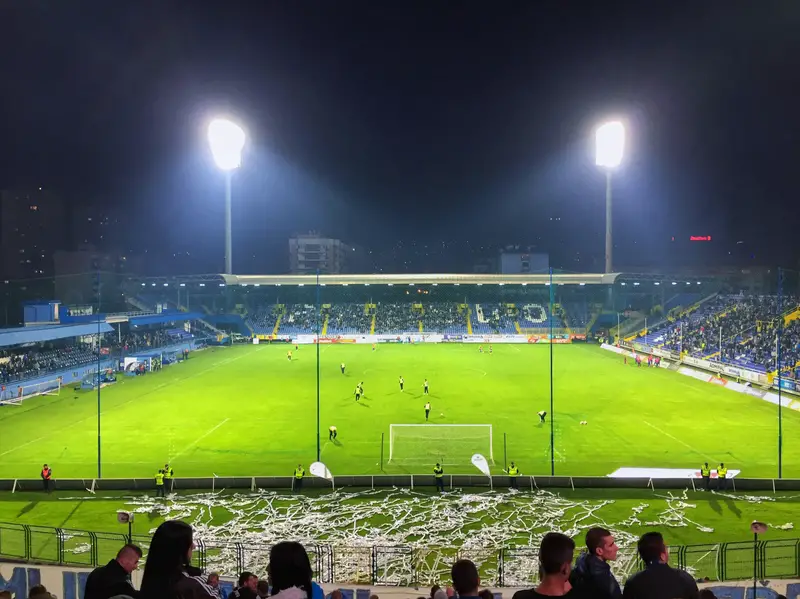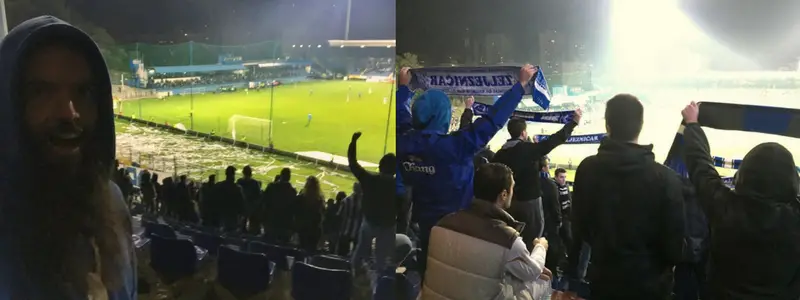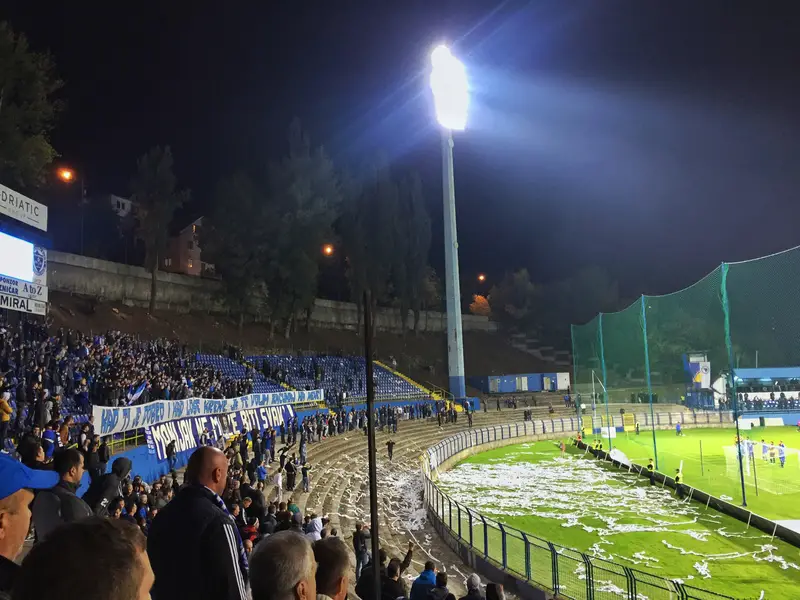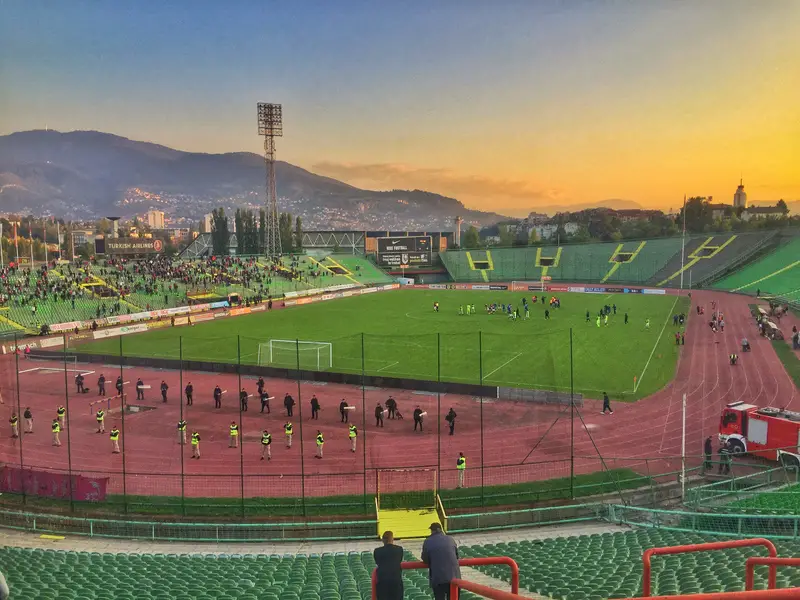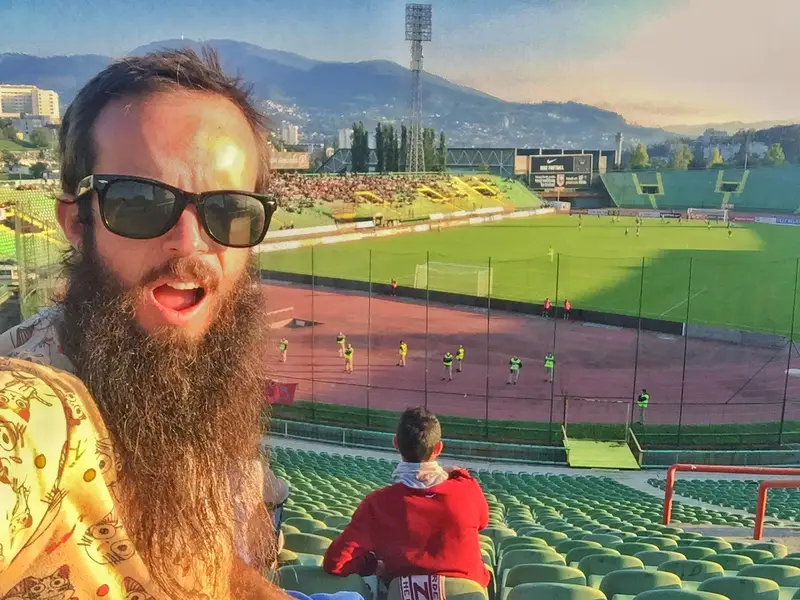Like pretty much everywhere in Europe, football is the most popular sport in Bosnia & Herzegovia (BiH).
The top footballing moment in the country is qualifying for their first Football World Cup in 2014.
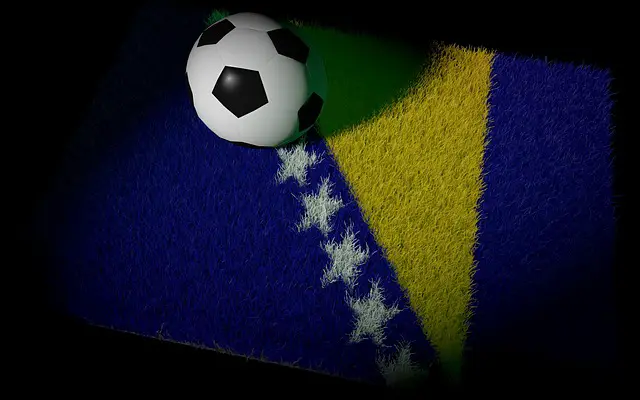
They had close losses to Argentina (2-1), and Nigeria (1-0) and a victory over Iran (3-1). There final placing was 20th, not too shabby.
Currently, they are ranked 36th in the world.
BiH doesn’t exactly jump out as a sporting country though, right? And it really isn’t.
Granted the countries history has been tricky, but take a look at the number of athletes they’ve had in the Olympics (current pop. 3.8 million) in the screenshot from Wikipedia below. Read on to discover the reasoning for how their flag came to be before we jump back to football chat.
The Bosnia & Herzegovina Flag Design Story
With BiH players due to represent their country in the 1992 Barcelona Olympics rather than Yugoslavia like they had done since 1924 (became independent in 1991), they ran into an issue. They needed a flag for the Olympics. With the time of the essence, the current flag was created.
The flag was designed to mean as little as possible because of the ethnic issues that plague the country to this day.
- the orange triangle is supposedly representing the shape of the country
- the stars are essentially there for decoration. There is no fixed amount of stars on the flag so when you are exploring Sarajevo you could see four, nine, whatever the flag designer found suited best
Cool, huh! That is what we were told by our guide on the free walking tour.
RELATED POST: 11 THINGS TO DO IN SARAJEVO
Back to football…
Are There Any Professional Leagues In BiH?
From what I understand, the Premier League is a professional league.
I was lucky enough to watch both of the Sarajevo based Premier League football teams play.
Match 1: Željezničar vs. Zrinjski
This was a top of the table clash. Grbavica Stadium has a capacity of 13,700. The fans were kitted out in the team colours blue and white, this was lucky for me, as my hoody is blue and white. The crowd wasn’t in the numbers I expected to see (maybe a third full?) for a big clash.
One thing I took note of was how far the ultras are from the pitch at the southern end of the ground. They were well behaved, though I had never seen a flare performance like the one they did after throwing big rolls of paper normally used for shopping receipts onto the grass behind the pitch.
There was a short but sweet show of flares. Pyro stuff really gives energy to the games. I wonder what it’s like to be a player when they start going off? The smoke afterward is probably the most annoying. Apparently, in most stadiums flares are banned…somehow they still make it in. ALL THE TIME.
In the northeastern corner of the stadium 20 – 30 Zrinkski (Mostar) supporters huddled together. They went bonkers after scoring, even dancing with what looked like a strobe for five minutes. Interestingly, at about the 82nd minute, the Mostar supporters left the stadium with their team up 1-0. With some of the riot police following close behind, I can only guess this was for safety reasons.
Did you know some stadiums have separate entrances for away team supporters? They do in Poznan’s Inea Stadium.
Match 2: Sarajevo vs. Krupa
Having done a little bit of research a couple nights before the Sarajevo football weekend, I had read that FK Sarajevo wasn’t as big as FK Željezničar. This seemed odd to me given:
- Their home ground, Asim Ferhatovic Hase Stadium, is the biggest stadium in the country (35,000 capacity)
- They are named after the city, the capital city
But I think the date of the clubs being founded plays a role in this. With FK Željezničar founded in 1921 and FK Sarajevo in 1946. The connection to clubs is incredible across generations. That’s my best guess.
When I arrived for the 4 pm kickoff the crowd was tiny. I’m guessing there were no more than 4,000 people there? They really should play at a small crowd in these situations right.
I again sat in the area with the Ultras. It was different being there in the daylight. At night I can sort of blend in. During the day, not so much. Especially as I wasn’t in the red and white local colours.
There seemed to be a lot more girls in this bunch of ultras which is cool. They were more or less the same in the day, with the daylight making them look a lot more friendly.
FK Sarajevo choked big time. THey were down 1-0 at the break before going 2-1 in about the 80th minute. The crowd went nuts, I think there must be smaller supporter groups as well as there seemed to be another group finding their singing voice after that goal.
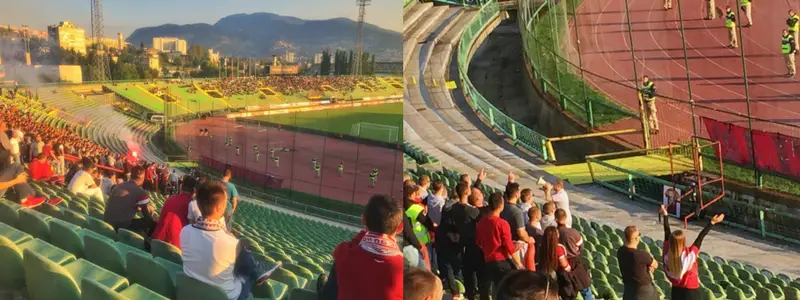
Left: check out all the security. Right: you can see the boss man leading the ultras with his big megaphone.
Less than five minutes later they were down 3-2! That was the final result. Yet the ultras continued on chanting regardless. No doubt with a sour taste in their mouth. When I was leaving, I noticed just how sensational the sunset was! Brilliant.
Well, there you go. Sport just doesn’t seem to be a massive part of the culture. I can only recall two instances of kids playing football during 17 days in the country. On the other hand, there was a lot of Ultras related graffiti in Mostar and there seemed to be a lot of ‘sports’ bars which I think translate to betting agencies.
They aren’t big on fitness either, very minimal people out running and getting general exercise in. I noticed this and asked the tour guide who said it probably relates to the war. People would run from A to B, therefore, they don’t associate running with great things. I only went for one run in Sarajevo, but the former Snipers alley made for a good running area in the city.
Football is definitely the most popular sport in BiH though. No doubt about that.


